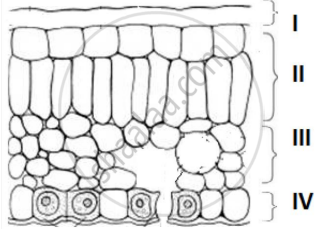Advertisements
Advertisements
प्रश्न
What are the differences between the transport of materials in xylem and phloem?
उत्तर
| Transport of materials in xylem | Transport of materials in phloem |
| Xylem involves the transport of water and minerals from the soil via roots to the rest of the plant body. | Phloem involves transport of food materials from the leaves to different parts of the plant body. |
| Movement of water is unidirectional, i.e. upwards from the roots to the aerial parts of the plant. | Movement of food is bidirectional, i.e. both upward and downward. |
| Transport of material in xylem requires physical forces such as transpirational pull. | Transport of material in phloem requires energy in the form of ATP. |
APPEARS IN
संबंधित प्रश्न
How is food transported in plants?
What is the name of tissues which transport food in a plant?
What substance/substances are transported in plants by sieve tubes (or phloem)?
What are the components of the transport system in highly organised plants?
State the term used for the transport of food from leaves to other parts of plant.
Which process in a plant is accomplished by utilising energy from ATP : transport of water and minerals or transport of food?
What is phloem tissue? Phloem contains two types of cells joined side by side. Name these two types of cells. State whether these cells are living or dead.
What do you mean by 'translocation' with respect to transport in plants?
Which plant tissue is involved in translocation : xylem or phloem?
Draw a labelled diagram of (i) a xylem vessel, and (ii) a sieve tube (or phloem).
One of the following is not a constituent of blood. This one is:
The phloem tissue in plants is responsible for the transport of:
Which of the following is accomplished in a plant by utilizing the energy stored in ATP?
The transport system in plants consists of two kinds of tissues X and Y. The tissue X is made up of living cells and consists of two components A and B. The component A has tiny pores in its end walls and contains only cytoplasm but no nucleus. On the other hand, component B has cytoplasm as well as nucleus. The tissue Y is made up of dead cells and consists of two components C and D. The component C has open ends whereas component D does not have open ends. In flowering plants, either only C or both C and D transport water but D is the only water conducting tissue in non-flowering plants.
(a) What is (i) tissue X (ii) component A, and (iii) component B?
(b) What is (i) tissue Y (ii) component C, and (iii) component D?
Water and dissolved minerals get into the root hair of a plant by a process called A and enter the conducting tissue B. The process C helps the water and dissolved minerals to move up through tissue B in roots and stem, and reach the leaves of a plant. In the leaves, food is made by a process D. This food is then transported to all the parts of a plant through tissue E. The process of distributing food made in the leaves to all the parts of the plants is called F.
(a) What are (i) A (ii) B (iii) C (iv) D (v) E, and (vi) F?
(b) Which tissue is made up of living cells: B or E?
(c) Which tissue, B or E, contains sieve tubes?
(d) Which tissue, B or E, contains tracheids?
The form of sugar transported through the phloem is glucose.
In the given transverse section of the leaf identify the layer of cells where maximum photosynthesis occurs.

